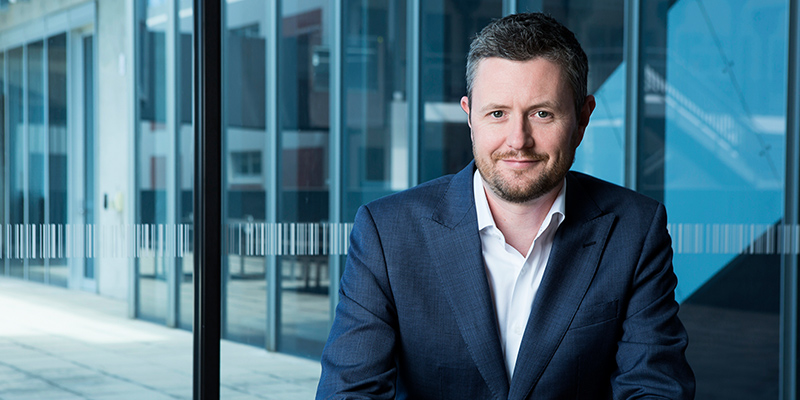From the Vice Chancellor:
A rising star
 INSIDE UNISA
INSIDE UNISAUniSA is one of the best young universities in the world – that’s a nice thing to be able to say and, to be honest, we say it as often as we can.
But, bragging rights aside, one of the best aspects of being a top young university is that, like many other such institutions around the world, UniSA was established with a clear, distinct reason for being.
In part, this reflects the social environment into which UniSA was born – it was a time when leaders were explicitly looking at how higher education could better serve the nation, how we could do things differently, and how we could shape for-purpose institutions.
It was a time when there was an appetite for change and innovation – a time a lot like now.
When, just over thirty years ago, Parliament of South Australia legislation brought the University of South Australia to life, one of the most important inclusions in that legislation was a clear, detailed section on the goals, aims and responsibilities of the new institution.
If you’ve never read it, you can take a look at the University of South Australia Act 1990 on the SA government website. It’s a bit of a dry read in parts, I’ll admit, but the interesting section is Part 2, Section 5, Functions of the University.
Some of the general concepts you’ll find in that section – such as a commitment “to preserve, extend and disseminate knowledge through teaching, research, scholarship” – are common to universities around the world.
But there are also some specifics that have helped shape UniSA into the unique institution it is today: a commitment “to meet the needs of the Aboriginal people”; the specific mention of “industry, commerce, the professions”; the provision of tertiary learning for those people who have “suffered disadvantages in education”; and a commitment to “programmes for the enhancement of the diverse cultural life of the community”.
Those values and goals weren’t just something people chatted about fondly at the time – they were something they enshrined in the legislation of this university. Three decades later, you can see the profound positive impact that has had.
We have the highest proportion of Aboriginal students in the state and have just launched a new Stretch RAP committing to the establishment of our Aboriginal Knowledges Centre.
In last month’s Times Higher Education 2024 rankings, we ranked in the world’s top 100 universities for industry engagement.
We have the highest proportion of students from disadvantaged backgrounds in the state, ranking sixth in the nation, and QS rank us number 24 in the world for social equality. We have also made a strong commitment to students who might otherwise be disadvantaged by distance, with vibrant campuses in Whyalla and Mount Gambier delivering education tailored to the needs of their communities.
And our outreach initiatives, including MOD., the Bob Hawke Prime Ministerial Centre and Samstag, are among the state’s leading cultural centres.
Would we have achieved these outcomes if our founding legislation had not made such a clear commitment to those defining principles?
Probably not, because our leadership would have been obliged to focus on best delivering whatever key functions were named in the legislation. And, if the legislation had contained little in the way of specific commitments – as is the case at some other universities – successive leadership teams could have taken the institution in any number of different directions.
We can’t say exactly what that would have looked like three decades on, but I don’t believe we would have achieved the depth of outcomes we have for our community had we started with a different legislated mission.
Enshrined in our founding charter, our defining principles have served as the compass star for this university.
And now, following months of parliamentary proceedings, the Joint Committee into the Establishment of Adelaide University has tabled its report. The State Government and members of the crossbench have indicated their support for passage to enable legislation, and draft legislation has been introduced into the Upper House. This signals confidence in our ambitious vision and significant steps forward in delivering a new university for the future in our state.
Our vision is that the new legislation – which is largely based on the University of South Australia Act – can become the compass star for the institution we will create. It will enshrine those same principles of equity, access, diversity, and innovation, alongside excellence in teaching and research, to ensure Adelaide University delivers all that we need it to for our community.
Professor David Lloyd
Vice Chancellor and President
Other Stories
- Tiny nanocarriers could prove the magic bullet for acne sufferers
- Stop the digital criminals with basic cyber hygiene practices
- $40m aged care, health and education hub opens in Adelaide’s northern suburbs
- Should I be getting my vitamin D levels checked?
- From the Vice Chancellor: A rising star
- Achievements and Announcements
- New online qualification supports frontline workers responding to child abuse
- Aboriginal Knowledges Centre takes shape under new UniSA RAP
- Celebrations for new graduates and Hon Doc for popular South Australian leader
- In Pictures: Spring graduations ceremonies
- The latest books from UniSA researchers



